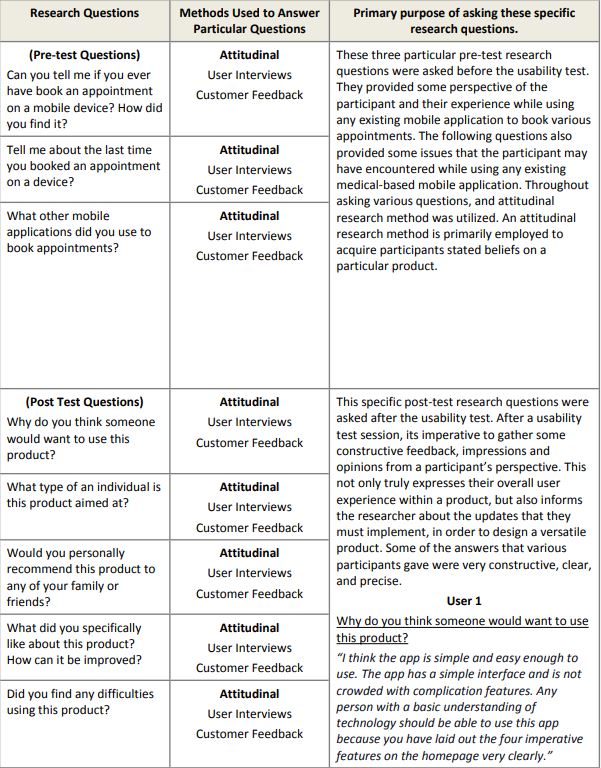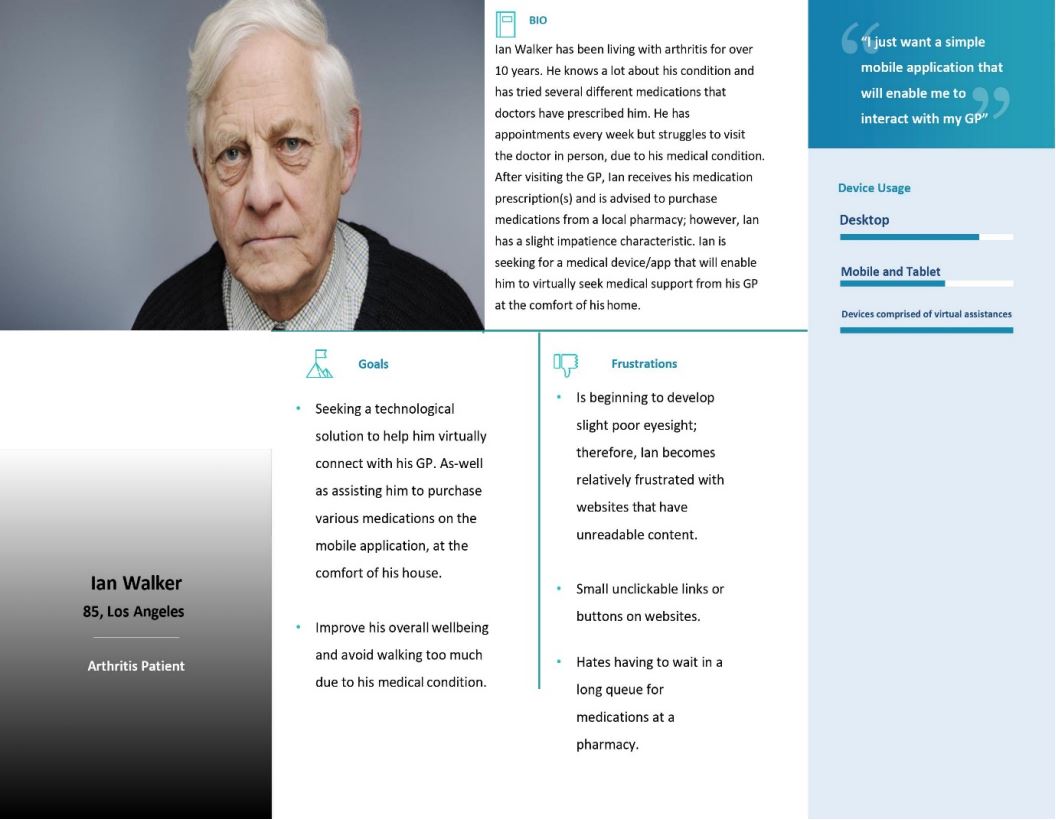Usability Research
of a Remote Health
Support App/Device
A design project to learn how older adults with
severe medical condition interact with technology.
A design project to learn how older adults with
severe medical condition interact with technology.
When people age they are more susceptible to the degeneration of various abilities, such as hearing, mobility, cognitive, and vision. As such the deteriorating abilities tend to cause technological implications among many older adults; thus, they find it difficult to find medical support from various devices.
Nowadays, numerous medical resources are rapidly shrinking and as a result, older adults with severe medical conditions are finding it difficult to acquire health assistance. This is due to many hospital beds being full and people having to wait in the long queue for the required treatment. As a result, this has immensely impacted numerous developing nations and now they are seeking for some efficient technological solutions. These solutions can ultimately keep non-critical individuals at home with sufficient medical assistance through technological devices.
However, when considering these technological solution ideas, it’s imperative to also consider that the older generation with limited technological experience may find it intricate to utilize the devices. As a result, I have figured out a way to design a medical mobile application, which will enable older adults with arthritis to easily book, change, cancel appointments and more.
The ultimate objective of the research was to carefully scrutinize the project problem and understand why older adults find it difficult to use technology.
Hi, my name is Sahil Samani and I was the lead user designer and researcher of this project. I conducted a moderated remote usability test among 4 different people.
Before commencing the usability evaluation, I invited four participants to test Easy Care medical mobile application. Due to the horrendous COVID-19 situation, it was appropriate to gather only four participants. The virus had some repercussions on the usability evaluation, such as the product was not tested with the targeted users. Instead, the product was evaluated throughout various distinct age groups.
As a lead researcher, I conducted a moderated remote usability testing with 4 different users. Throughout the product evaluation, various research-based questions were appropriately asked, and to appropriately answer them I utilized some conventional UX research methods: Attitudinal and Behavioural. By appropriately implementing these methods, I was able to conduct user interviews and acquire customer feedback on the product.

This usability evaluation solely focuses on a particular target user, with a severe physical limited hand dexterity. Some of the research conducted throughout the project has made me realise the complications that the older adults encounter with technology.
Throughout the development of this product, the research made me realise that as individuals age, they are more susceptible to the degeneration of various abilities, such as hearing, mobility, cognitive, and vision. As such, these deteriorating abilities tend to cause technological implications among many older adults. It also made me realise the accessibility of modern technology can initiate many issues among many older adults.
The Easy Care medical mobile application is targeted towards an individual with limited hand dexterity. Ian Walker is an 85-year-old individual who has been living with arthritis for over 10 years. By researching his physical medical condition in greater detail, I was able to implement technological features within the application that assisted Ian to appropriately utilize the mobile application with ease.

This project required me to meticulously research on how older generations with a severe physical limitation and limited technological experience find it problematic to utilize technological devices. Furthermore, I had to design various prototype sketches, that ensured the product was functional and interactive.
Before commencing the usability research project, I had to accurately research on how older generations and people with limited technological experience find it difficult to utilize certain devices. The research took weeks to complete, as I had to scrutinize innumerable scholarly research articles on Google Scholars. Many of the articles that I found were primarily focused on how older adults with certain disabilities find it difficult to utilize technological devices and how accessibility can be problematic to certain individuals and more. At this stage, it was appropriate for me to examine each article in greater detail and highlight some of the key terminologies.
Since this usability research study primarily emphasised on older adults with limited hand dexterity or arthritis, it was imperative for me to also research what certain features in a technological device do people find most problematic to use. As individuals age, they are more prone to fundamental changes, such as mobility. Older adults with mobility issues tend to find buttons and text difficult to view, as they are relatively small. As a result, I researched on such ways that would potentially reduce the complexity that older adults encounter with devices. Such ways included implementing a voice interaction feature and large content.
After the research phase was successfully completed, it was time to specify a target user and as well as design several low-fidelity and high-fidelity wireframes. Identifying the target user was relatively simple, as I had already researched before-hand. Following specifying the target user, I had to create a user persona, which comprised of the target user’s biography, goals, frustrations and device usage. Now that the target user had been established, it was time to design various prototype sketches. In order to design sketches, I had to research numerous medical mobile applications. Furthermore, I had even installed a few medical mobile applications on my phone, just to acquire a better feel of the features and the functionality on the applications.
Since this usability research study entirely emphases on users with limited hand dexterity or arthritis, it was crucial to implement some assistance features, like voice interaction feature.
Individuals have an option to either book manually or use the voice interaction feature. For people like Ian Walker, a voice interaction tool can enable an open world of productive possibilities. The voice interaction tool can assist numerous people with severe physical impairment, such as arthritis from excessive typing or clicking on unreadable buttons.
Alongside implementing voice interaction features, it was significantly important to also implement large buttons and text on the medical mobile application. Since Ian is beginning 16 to develop slight poor eyesight, it was crucial to add readable content on the application.